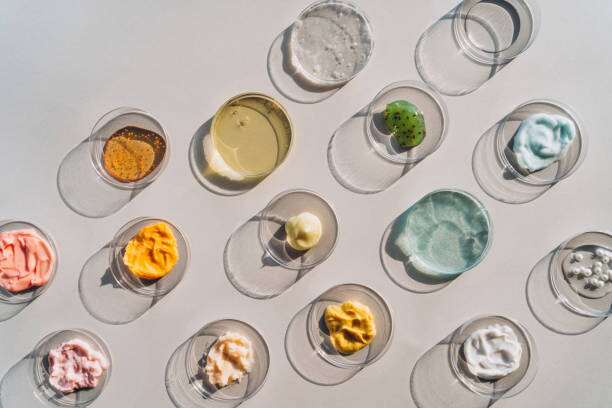Skincare has always had its fair share of trends, from the ten-step routine craze to the age of acid peels that promised instant renewal. But lately, people with delicate complexions are shifting gears, rejecting quick fixes in favor of patience, consistency, and balance.
Sensitive skin can’t be rushed, and the latest movement toward slow skincare is making space for gentler, more thoughtful routines that actually last.
The Shift Toward Gentler Formulas
In the past, sensitive skin was often treated like an obstacle to overcome. Brands threw every soothing extract and fragrance-free label onto shelves without much science behind it.
Today, the industry has pivoted toward an evidence-based understanding of irritation and inflammation. Dermatologists and researchers are focusing on barrier repair, microbiome health, and fewer active ingredients used in smarter ways. The old impulse to layer multiple treatments is being replaced with a pared-down philosophy. People are learning that less is not only more, but also better tolerated.
This shift is reflected in the way consumers shop. Minimalist formulations are no longer seen as boring or ineffective. A single serum that focuses on hydration and calmness is given more weight than three different bottles promising miracles in a week.
Brands are reformulating with cleaner emulsifiers, biocompatible oils, and peptides that strengthen skin over time.
The move isn’t about achieving overnight results, but about preventing long-term irritation and keeping the complexion resilient.
The Language Of Patience In Beauty
One of the most noticeable aspects of slow skincare is the change in language around how results are expected. Instead of promising visible change in seven days, products highlight their cumulative benefits over months of use. This language resonates with those who’ve grown tired of the cycle of trial, reaction, and abandonment.
For people who’ve dealt with stinging cleansers or serums that caused more redness than radiance, patience feels like a relief.
The cultural moment is also a factor. Wellness as a whole has shifted toward sustainability and mindfulness, and skincare is riding the same wave. Sensitive skin routines are adopting language that reflects lifestyle rather than just aesthetics. Words
like “repair,” “soothe,” and “strengthen” now stand where “transform” and “peel” once dominated. There’s an acknowledgment that people with sensitivity don’t want to feel punished by their products—they want to feel safe using them every single day.
How Sensitive Skin Skincare Is Evolving
For those with delicate complexions, innovation has been long overdue. The growth in sensitive skin skincare reflects both consumer demand and better dermatological insight.
Scientists now understand the role of nerve endings and immune responses in hypersensitivity, which is why certain ingredients are being phased out or reformulated.
Alcohol-heavy toners, abrasive scrubs, and aggressive retinol percentages are falling out of favor. In their place, you’ll find lipid-rich moisturizers, oat-based soothers, and retinol alternatives like bakuchiol that offer similar effects without the sting.
This evolution is also shaping routines. Instead of layering seven or eight products, people are gravitating toward a three- or four-step system that covers cleansing, hydrating, and protecting without overcomplication.
Sunscreen remains the non- negotiable step, but even those formulas are changing. Lightweight mineral-based sunscreens now come in textures that don’t leave chalky residues, making them easier for sensitive skin types to adopt daily.
It’s a practical kind of progress that makes long-term adherence far more realistic.
Science Meets Nature
Another major trend in this space is the integration of natural ingredients supported by lab validation. While botanical claims were once treated as marketing fluff, today many plant extracts have strong clinical backing.
Centella asiatica, chamomile, and licorice root are examples of botanicals proven to reduce redness and irritation. Instead of positioning them as “alternative,” brands are presenting them as equal partners alongside peptides, ceramides, and niacinamide.
This balance of nature and science also builds trust. Consumers with sensitivity are less likely to gamble on harsh active ingredients, but they also don’t want untested folk remedies.
When a moisturizer combines lab-tested ceramides with oat extract, it speaks to both logic and comfort.
People know they’re getting something that works, but they’re also reassured that the formula isn’t going to provoke their skin. That balance is exactly what slow skincare stands for—measured, careful progress.
The Role Of Technology
Slow skincare doesn’t mean ignoring innovation. In fact, one of the most interesting developments is the rise of personal tech tools tailored for delicate complexions.
Devices that once focused on dramatic transformations are being reengineered with sensitivity in mind. For example, some skin tightening devices now come with customizable settings that let users control intensity, reducing the risk of irritation. Tools that use LED light therapy also offer gentler wavelength options specifically tested for sensitive skin.
Technology is also changing the way people track their routines. Apps and skin analyzers allow users to monitor hydration levels, barrier function, and even redness.
This shift toward measurement over guesswork helps people stick to slow skincare philosophies because they can see the small improvements adding up. Instead of waiting for a dramatic reveal, users appreciate subtle progress recorded week by week.
It brings a sense of calm and patience to what used to feel like a gamble.
Consumer Demand For Transparency
Another part of the slow skincare trend is the expectation that companies will be upfront about what’s in their formulas and why.
Sensitive skin users don’t want long ingredient lists full of unpronounceable chemicals without explanation. They want clear communication about what each ingredient does and how it contributes to overall skin health. This transparency movement has forced companies to simplify packaging, publish third-party studies, and even provide batch-level information about sourcing.
The benefit of this shift is mutual trust. People are less likely to abandon a product if they feel the company respects their need to know what they’re applying. It’s also reduced the stigma around sensitive skin itself.
Instead of being treated as an edge case or problem to fix, sensitivity is now recognized as a legitimate skin type that deserves its own science-backed solutions.
The cultural respect this brings has fueled an entire sector of the market that shows no sign of slowing down.
Where Slow Skincare Is Heading
Looking ahead, the slow skincare trend is likely to expand into even more personalized directions.
Genetic testing and microbiome analysis are making their way into consumer skincare, promising routines built specifically for an individual’s sensitivity profile. While still in early stages, the potential is enormous. People may soon have access to moisturizers designed to match their exact barrier function or serums customized to their skin’s inflammatory triggers.
At the same time, sustainability will remain central. Sensitive skin users are often more mindful of what they put on their bodies and what they put back into the environment.
Biodegradable packaging, refillable containers, and formulas made without water waste are aligning with the values of this group. It’s a holistic view of care that extends beyond the skin and into everyday choices.
That’s the ultimate expression of slow skincare—treating sensitivity as something worth protecting on every level.
Closing Thoughts
The rise of slow skincare reflects more than a passing fad. It’s a recognition that sensitive skin thrives under consistency, trust, and patience.
What once felt like a disadvantage in the skincare aisle is now shaping an entire movement toward gentleness and long-term health. As formulas become smarter, routines become simpler, and transparency grows, sensitive skin users finally have an approach that feels built for them.
Slow skincare isn’t just a method, it’s a mindset, and it’s here to stay.



















